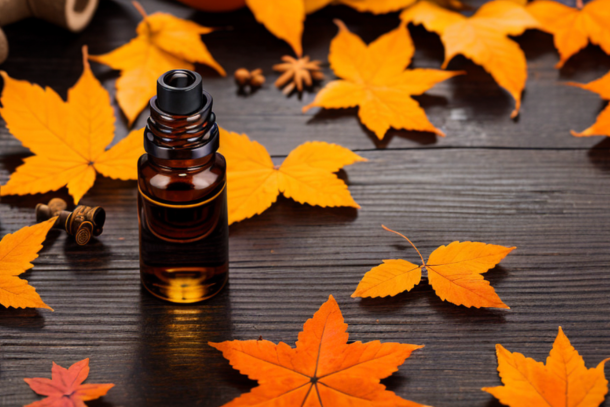Unlock Your Athletic Potential: The Power of Sports Massage for Performance and Recovery

Whether you're a professional athlete or a weekend warrior, the physical demands of sports can take a toll on your body. From minor strains to major injuries, the impact of athletic activities can lead to a myriad of issues that can hinder your performance. That's where sports massage comes in!
Tailored specifically to the needs of athletes, sports massage is a specialized form of therapy that focuses on enhancing athletic performance and expediting recovery. Employing a range of unique techniques, it's aimed at improving circulation, alleviating muscle tension, and disintegrating adhesions - ultimately enabling you to maintain peak performance and keep your athletic aspirations flying high! Let's dive deeper to understand what sports massage really entails.
The Winning Edge: Benefits of Sports Massage
Just as a high-quality piece of sports equipment can give you an edge in your favourite game, sports massage can help boost your performance, enhance recovery, and keep you at the top of your game. Let's delve into the key benefits that sports massage has to offer.
Uplifting Performance: How Sports Massage Helps You Excel
-
Reducing Muscle Tension: One of the significant benefits of sports massage is its effectiveness in mitigating muscle tension. The physical exertion of sports can cause muscle tightness, which can impact your performance. Sports massage uses specialized techniques to release this tension, enabling your muscles to function at their optimum level.
-
Increasing Range of Motion: The movements involved in sports can sometimes lead to stiff joints and reduced flexibility. Sports massage works wonders in enhancing your range of motion by loosening tight muscles and improving joint flexibility. This increased flexibility can translate into improved performance on the field, court, or track.
-
Improving Circulation: Sports massage stimulates blood flow to your muscles. Improved circulation means more oxygen and nutrients being delivered to your muscles, which can boost your endurance and strength, giving you a competitive edge.
-
Reducing Pain: Muscle soreness and pain can be a hindrance to performance. Sports massage targets the root cause of the pain, alleviating it and helping you perform at your best.
Fast-Tracking Recovery: Sports Massage and Healing
But the magic of sports massage doesn't end with boosting performance. It's equally potent when it comes to improving recovery after a strenuous game or workout.
-
Reducing Inflammation: High-intensity sports activities can lead to inflammation and swelling in the muscles. Sports massage helps reduce inflammation by improving circulation and promoting lymphatic drainage.
-
Speeding Up the Healing Process: By increasing blood flow and reducing muscle tension, sports massage can accelerate the healing process, helping you recover from injuries or strenuous activities faster.
-
Reducing Scar Tissue Formation: When injuries heal, they often leave behind scar tissue, which can cause stiffness and possibly lead to future injuries. Sports massage can help break down this scar tissue, promoting healthier and more elastic tissues.
Unlocking the Art of Sports Massage: How It Works
Sports massage may seem like an ordinary massage at first glance, but it's more complex and specialized than it appears. It employs a variety of unique techniques, each designed to help you overcome the physical challenges associated with sports and exercise. Let's look at the science behind this athletic elixir and understand how it works.
The Sports Massage Approach: A Symphony of Techniques
At its core, sports massage is about enhancing circulation, relieving muscle tension, and releasing adhesions. The skilled hands of a sports massage therapist employ a range of specific strokes to achieve these goals.
-
Effleurage: The starting point of most sports massages, effleurage is a technique that involves long, gliding strokes. This action gently warms up the muscles, preparing them for the more intensive techniques to follow. It also aids in the relaxation of the muscles and enhances the overall circulation of blood.
-
Petrissage: As the massage progresses, the therapist moves on to petrissage, a kneading technique. Similar to kneading dough, the therapist works to break up muscle tension and adhesions, loosening tight muscle fibres and releasing trapped toxins.
-
Friction: When it comes to stubborn knots and deep-seated tension, friction is the technique of choice. This stroke involves deep, penetrating pressure that gets to the heart of trigger points and tense muscle areas, effectively releasing them.
-
Tapotement: Finally, there's tapotement, a rhythmical tapping or drumming technique. The brisk movements of this technique stimulate circulation and wake up the muscles, reducing muscle soreness and leaving you with a sensation of invigoration.
Through this orchestrated blend of techniques, sports massage gets to the root of athletic aches and pains, treating them at the source. The process is not merely about applying pressure; it's a strategic approach that uses an understanding of anatomy, physiology, and the specific demands of athletic activities to provide a targeted, effective treatment.
A Game Changer for Athletes: Who Should Get a Sports Massage?
While the name "sports massage" might imply that it's exclusively for high-performing athletes, this type of massage is actually beneficial for anyone with an active lifestyle or those dealing with certain physical conditions. Let's delve deeper into who can benefit from sports massage.
All Levels Welcome: Sports Massage for the Athletic Spectrum
One of the best things about sports massage is that it's not limited to elite athletes. Whether you're a weekend jogger, a gym enthusiast, or a professional football player, sports massage is a tool you can use to stay at the top of your game.
-
Recreational Athletes: If you enjoy a weekly game of tennis, love to hit the hiking trails, or cycle for fun, a sports massage can help keep your muscles flexible and free from tension. It's a great way to reward your body for its hard work and to keep minor aches and pains at bay.
-
Competitive Athletes: For those who compete—whether on the local level, in school teams, or in national competitions—sports massage can be a secret weapon. Regular sessions can help enhance your performance, speed up recovery time, and prevent injuries, giving you an edge over your competition.
-
Professional Athletes: For pros, sports massage is an integral part of training and recovery programs. The stakes are high at this level, and maintaining optimal physical condition is crucial. Sports massage can help manage the physical stress of intense training and competitive pressure.
Beyond the Athletic Field: Sports Massage for Injury Recovery and Chronic Pain
Sports massage isn't only for those actively involved in sports. If you're recovering from an injury or dealing with chronic pain, a sports massage can provide relief.
-
Injury Recovery: Whether you've had a sports-related injury or an injury from an accident, like a fall or a car crash, sports massage can aid in your recovery process. Techniques used can help reduce inflammation, improve circulation to the affected area, and help to speed up healing.
-
Chronic Pain Sufferers: People suffering from conditions that cause chronic pain, such as arthritis or fibromyalgia, may find sports massage beneficial. The techniques used can help to relieve muscle tension, improve flexibility, and reduce pain.
Into the Game: What to Expect During a Sports Massage
Venturing into the realm of sports massage for the first time can be exciting, yet it may also stir up a few nerves. Don't worry; we're here to demystify the process. Here's what to anticipate during your sports massage session.
Prior Consultation: Understanding Your Needs
Before your sports massage begins, expect a consultation with your massage therapist. They'll ask about your overall health, any injuries or physical conditions you have, and what you're hoping to achieve from the session. This allows them to tailor the massage to your specific needs and to take necessary precautions.
Managing Discomfort: It's a 'Good Pain'
As your therapist applies deep pressure to your muscles, you may experience some discomfort. This sensation is sometimes referred to as "good pain"—a feeling of tension release in the muscle. Don't be alarmed; this is a natural part of the process. However, remember that there's a difference between 'good pain' and outright distress. Your therapist should never cause you unbearable pain. If you feel too uncomfortable at any point, communicate this to your therapist so they can adjust their technique.
Post-Massage Sensations: A Feeling of Release
Post-massage, you might notice some soreness or stiffness in the area that was worked on, especially if this was your first session or if it's been a while since your last massage. This is a normal response as your body adjusts to the pressure applied. This feeling usually subsides within a day or two, leaving behind a sense of release and relaxation.
Hydration and Rest: Post-Massage Care
After your sports massage, it's crucial to stay well-hydrated. Drink plenty of water to help your body flush out any toxins that have been released from your muscles during the massage. Rest is equally important; give your body time to recover and enjoy the full benefits of the massage.
Playing it Safe: Precautions and Risks of Sports Massage
As with any physical therapy, sports massage does come with a few precautions and potential risks. It's important to approach your sports massage with knowledge and care to ensure a beneficial and safe experience. Here are some key points to bear in mind:
Acute Injuries and Infections: Timing Your Massage
If you're dealing with an acute injury—like a sprained ankle, pulled muscle, or any condition that's in its initial inflammatory phase—it's best to postpone your sports massage until you've recovered a bit. Similarly, if you're dealing with an infection or are feeling unwell, it's a good idea to reschedule your appointment. Not only could a massage potentially exacerbate your condition, but it's also important to protect your therapist and others you may come into contact with.
Health Conditions: Full Disclosure
When you're filling out your intake form or having a chat with your therapist before the session, it's crucial to mention any health conditions you have. Some conditions, like osteoporosis, certain types of cancer, or specific heart conditions, could make deep-pressure massages like sports massage potentially unsafe. Your therapist can adjust their techniques or may advise another type of massage that would be safer and more beneficial for you.
Bruising: A Potential Side Effect
Some people may experience bruising after a sports massage, especially if they're new to it or if they have a condition that makes them bruise more easily. This is usually a result of the deep-pressure techniques used during the session. If you know you're prone to bruising, be sure to let your therapist know ahead of time so they can adjust their technique accordingly.
On the Lookout: Finding a Sports Massage Therapist
Finding the right sports massage therapist can make all the difference in your experience and the results you achieve. To help you in this essential search, here are a few important factors to consider:
Licensing and Insurance: The Essential Credentials
The very first thing you need to confirm is whether your potential therapist is licensed and insured. This isn't just about ticking off a checklist—it's a crucial measure of a therapist's professional standing and competence. Licensing ensures that they've met the required educational standards and passed relevant examinations. Insurance, on the other hand, protects both you and the therapist in the unlikely event of an accident or injury during a session.
Experience and Training: The Backbone of Proficiency
Once you've confirmed that your potential therapist has the necessary credentials, delve into their experience and training. Have they worked with athletes or individuals with similar conditions or goals as yours? How familiar are they with the techniques required for an effective sports massage? The more experience and specific training a therapist has, the more adept they are likely to be in addressing your unique needs and helping you achieve your wellness goals.
Comfort and Connection: The Foundations of a Good Therapeutic Relationship
Finally, never underestimate the importance of feeling comfortable with your therapist. This isn't just about liking them as a person (though that certainly helps!)—it's about feeling safe, respected, and heard. You should feel free to ask questions, express your concerns, and provide feedback during your sessions. A good therapist will welcome your input, communicate clearly, and work collaboratively with you to ensure the best possible results. Remember, the best therapeutic relationship is a partnership based on trust and mutual respect.
Taking the time to find the right sports massage therapist can be a game-changer. It can transform your sports massage experience from just another appointment into an essential part of your performance improvement and recovery journey.
Investing in Your Athletic Wellbeing: Understanding the Cost of Sports Massage
When it comes to the cost of sports massage, it's essential to recognize that it can vary based on several factors. Let's explore the key considerations that can influence the pricing of sports massage sessions.
Location: Where You Seek the Treatment
One factor that affects the cost of sports massage is the location of the service. Different regions and cities may have varying price ranges due to differences in living costs, local market demand, and competition among therapists. Urban areas or regions with a higher cost of living might generally have slightly higher prices compared to rural areas.
Therapist's Experience and Expertise: Value in Skill
Another factor that can impact the cost is the level of experience and expertise of the sports massage therapist. Therapists with extensive experience, advanced certifications, or specialized training in sports massage may charge higher rates based on their level of skill and reputation. Their expertise and knowledge contribute to delivering a more effective and targeted massage experience.
Length of the Massage: Time Matters
The duration of the sports massage session also plays a role in determining the cost. Longer sessions generally incur higher fees compared to shorter ones. The length of the session can vary based on your needs and goals, ranging from 30 minutes to an hour or more. Longer sessions allow more time for thorough treatment and a more comprehensive focus on specific areas of concern.
It's important to remember that while cost is a factor to consider, it shouldn't be the sole determinant when choosing a sports massage therapist. The quality of the treatment and the therapist's expertise are crucial considerations that may outweigh any price differences.
Tips for Getting the Most Out of Your Sports Massage
To truly maximize the benefits of your sports massage experience, here are some valuable tips to keep in mind:
-
Communicate your needs: Openly communicate with your sports massage therapist about your goals, specific areas of concern, and any preferences you may have. This helps them tailor the session to your individual needs and ensures you get the most out of the treatment.
-
Arrive well-hydrated: Drink plenty of water before your sports massage to ensure your muscles are adequately hydrated. Hydration supports optimal muscle function and helps flush out toxins released during the massage.
-
Warm-up exercises: Prior to your sports massage, consider doing some light warm-up exercises or stretches. This helps prepare your muscles for the deeper work that will follow during the massage, enhancing the effectiveness of the treatment.
-
Take note of your body: Pay attention to how your body feels during the massage. If you experience discomfort or the pressure feels too intense, don't hesitate to communicate with your therapist and ask for adjustments. It's important to strike a balance between receiving the therapeutic benefits and ensuring your comfort.
-
Follow post-massage care: After your sports massage, follow any post-massage recommendations provided by your therapist. This may include stretching, icing any tender areas, or scheduling any necessary follow-up sessions. Taking care of your body in the aftermath of the massage can help prolong the positive effects and support your overall recovery.
-
Schedule regular sessions: Consistency is key when it comes to sports massage. Consider incorporating it into your training or recovery routine on a regular basis. This allows your therapist to address any recurring issues and helps you maintain optimal muscle health and performance.
-
Maintain a healthy lifestyle: Complement your sports massage with a healthy lifestyle that includes regular exercise, proper nutrition, and sufficient rest. These factors work synergistically to support your overall athletic performance and wellbeing.
Each sports massage session is an opportunity to enhance your physical and mental wellbeing. By following these tips, you can optimize the benefits, improve your athletic performance, and accelerate your recovery. Embrace the journey of sports massage and let it become a vital component of your athletic routine.
Unlocking the Potential: Embrace the Benefits of Sports Massage
In conclusion, sports massage stands as a trusted ally in the realm of athletic performance and recovery. By reducing pain, enhancing range of motion, and alleviating stress, it offers athletes of all levels a powerful tool to optimize their physical and mental wellbeing.
Beyond the primary benefits, sports massage also holds the potential to improve sleep, reduce stress levels, boost energy, and enhance mood - a holistic approach that extends far beyond the realm of sports.
To embark on this transformative journey, it's crucial to find a qualified sports massage therapist who understands your specific needs and goals. Their expertise will guide you toward the most beneficial treatments, allowing you to maximize the benefits and elevate your athletic potential.
So, whether you're an aspiring athlete seeking to break personal records or a dedicated fitness enthusiast striving for peak performance, sports massage is here to unlock your true potential. Embrace the power of this specialized therapy, and let it propel you to new heights of excellence in both your athletic pursuits and overall well-being.
Related to this article are the following:
- The Magic Touch: How Massage Enhances Wellbeing and Promotes Restful Sleep
- Unlocking the Power of Healing with a Deep Tissue Massage
- Experience the Warmth: Uncovering the Benefits and Techniques of Hot Stone Massage
- Experience the Multifaceted Benefits of Swedish Massage
- Revolutionizing Workplace Wellness: An Enthusiast's Guide to Office Massage Chairs
I do hope you have enjoyed this article and hope that you will subscribe to my newsletter so you can get the latest information about all things naturally relaxing.
Stay in touch, join the Naturally Relaxing Newsletter
Newsletter Signup
Post Your Comments
or post as a guest
Be the first to comment.
Latest articles in Relaxation

Capturing the Perfect Sunset: Tips and Techniques

The Benefits of Aromatherapy: Essential Oils for Relaxation

Embracing Calm: Innovative Ways to Relax in the New Year

Autumn Aromatherapy: Essential Oils for Relaxation

Embracing Autumn's Tranquillity: Finding Peace in the UK's Golden Season






